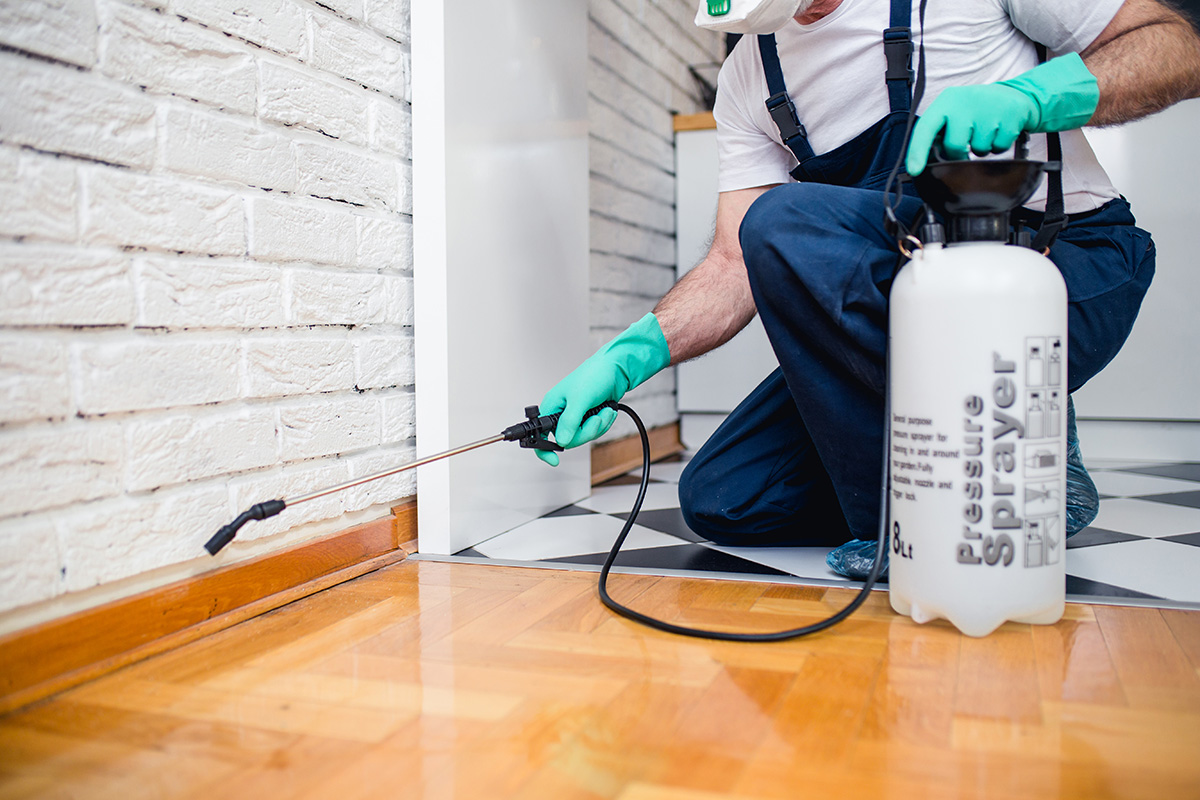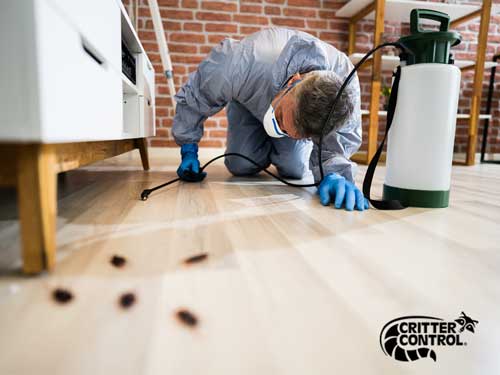Reputable A1 Bed Bug Exterminator Charlotte - Get Rid of Bed Bugs Quick
Reputable A1 Bed Bug Exterminator Charlotte - Get Rid of Bed Bugs Quick
Blog Article
Bed Bug Therapy Failure: Comparing Chemical Vs. Non-Chemical Solutions
In the world of pest control, specifically when handling the persistent issue of bed insects, the choice between chemical and non-chemical therapy solutions can be an essential one. Both techniques provide distinct benefits and downsides, affecting factors such as effectiveness, safety factors to consider, and general expense. By examining the nuanced details of each approach, a more clear understanding of which course to go after in resolving a bed insect infestation can be achieved.
Efficiency of Chemical Therapies
Chemical treatments for bed bug invasions have been extensively recognized for their powerful and rapid efficiency in eliminating these bugs. When considering the efficiency of chemical therapies, it is essential to recognize that they can give a fast and complete service to a bed bug problem. Expert pest control men often count on pesticides to target bed pests at different phases of their life cycle, consisting of nymphs, grownups, and eggs. These chemicals normally function by interrupting the bed pests' nerve system, bring about paralysis and eventual death.
In addition, chemical therapies have the advantage of using residual results, suggesting that they can continue to eliminate bed pests also after the initial application. This recurring activity is particularly useful in combating any prospective re-infestations. Furthermore, the quick activity of chemical treatments can bring relief to people encountering serious bed bug invasions, allowing them to gain back control of their living rooms swiftly.
Safety Worry About Chemical Solutions
One essential element that calls for careful consideration when utilizing chemical solutions for bed insect therapy is making sure the safety and security of passengers and the atmosphere. Direct exposure to particular chemicals made use of in bed pest therapies can lead to respiratory system concerns, skin irritation, or other negative responses, specifically in people with pre-existing problems or sensitivities.
In addition, the ecological effect of chemical services is another substantial consideration. Some pesticides made use of in bed pest treatments may be harmful to advantageous bugs, wild animals, and ecosystems if they seep right into the soil or water systems. It is necessary to utilize chemical treatments deliberately, complying with safety guidelines, and thinking about less toxic choices to mitigate these threats and ensure the safe and reliable monitoring of bed bug invasions.
Benefits of Non-Chemical Strategies
Taking into consideration the potential security worries and ecological influence associated with chemical options for bed pest therapy, exploring non-chemical techniques presents an appealing option with several distinct advantages. Non-chemical therapies are ecologically friendly, as they do not add to air or water pollution, making them a lasting selection for parasite control.
Additionally, non-chemical remedies can be efficient in targeting bed bugs, consisting of A1 charlotte bed bug exterminator hard-to-reach locations where chemical therapies may not penetrate. Approaches such as warm therapy, vacuuming, vapor cleansing, and cushion encasements provide complete elimination without using dangerous chemicals. Furthermore, non-chemical methods can be less disruptive, calling for very little prep work and enabling quicker reentry into treated locations. On the whole, opting for non-chemical bed pest treatment approaches not just prioritizes security and ecological defense but also guarantees effective and detailed insect control.
Limitations of Non-Chemical Treatments

Additionally, non-chemical therapies commonly need numerous applications to attain effective obliteration. This can be lengthy and might not always assure complete removal of all bed bugs and their eggs, particularly in hidden or hard-to-reach areas.
In addition, the success of non-chemical treatments greatly depends on proper execution and thoroughness, which can be challenging for people without expert competence. Inadequate application of non-chemical approaches might cause insufficient elimination, causing relentless problems and the requirement for added therapies.
As a result, while non-chemical treatments have their advantages, it is vital to acknowledge these constraints and consider them when determining one of the most reliable strategy for handling bed insect problems.
Price Comparison: Chemical Vs. Non-Chemical Options
Provided the restrictions related to non-chemical therapies, a necessary facet to assess in the context of bed bug administration is the expense comparison between chemical and non-chemical options. Chemical therapies typically include the application of insecticides by specialists, which can range from $250 to $900 per space, relying on the intensity of the invasion and the dimension of the area to be dealt with. In contrast, non-chemical therapies like warm therapy or steam can be more expensive, with expenses ranging from $1,000 to $6,000 for a whole home. While the preliminary price of chemical treatments may seem reduced, numerous therapies might be needed to completely remove the infestation, potentially increasing the total cost. On the other hand, non-chemical options may supply an extra sustainable and eco-friendly solution, although they can be cost-prohibitive for some individuals. Inevitably, when taking into consideration the expense of bed pest treatment options, it is necessary to weigh the in advance expenditures versus the efficiency and long-lasting sustainability of the picked technique.
Verdict

Taking into consideration the potential safety and security issues and ecological impact associated with chemical solutions for bed insect therapy, discovering non-chemical strategies presents an encouraging alternative with numerous distinctive benefits.Provided the restrictions connected with non-chemical therapies, a crucial aspect to assess in the context of bed insect monitoring is the expense contrast in between chemical and non-chemical choices. In comparison, non-chemical therapies like warm treatment or heavy steam can be more costly, with expenses ranging from $1,000 to $6,000 for a whole home. While the preliminary expense of chemical therapies may seem reduced, numerous therapies may be called for to completely eradicate the invasion, potentially increasing the total cost.In verdict, when contrasting chemical and non-chemical bed insect treatment choices, it is vital to think about performance, safety and security, advantages, restrictions, and expense.
Report this page